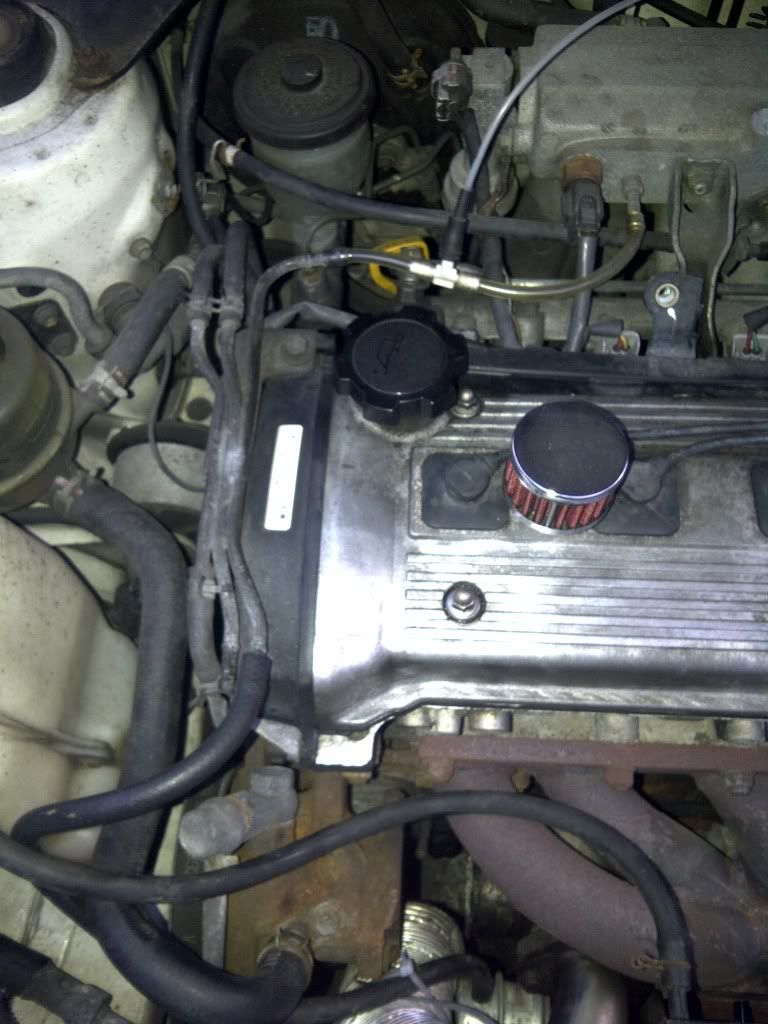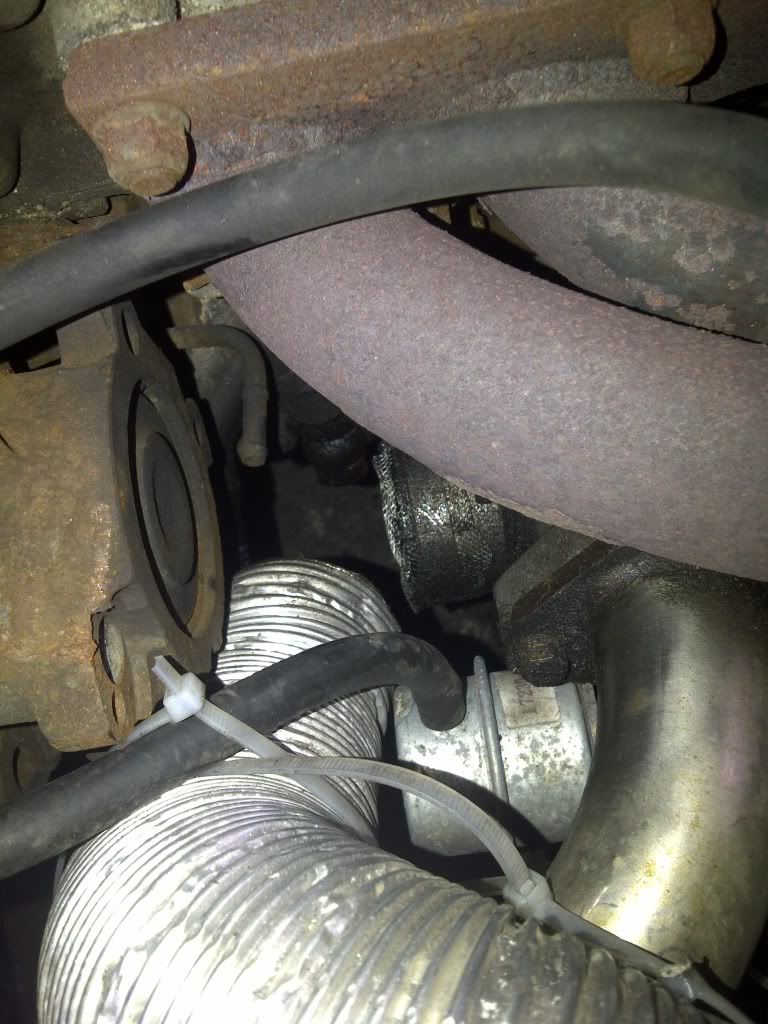Hi, I Have two GT's my first one with a CT9 Setup, with mods such as FMIC and Dump valve, and a recently purchased GT with a GT25R setup, with a FMIC but no Dump Valve, the confusion im having is very simple, the hoses seem to be setup differently for both,

above is the setup on my CT9, as far as i am aware the dumpvalve is setup correctly, its the rest which i need some one to clarify is correct, the middle hose connects to the efi pipe, is this correct, also why does it loop back at the top? is that to bypass the hi/lo solonoid? now the there is a hose coming from the actuator as can be seen closely below, it loops back into another port, is this also correct??

ok now to look at my new GT, it has a GT25 turbo with no dumpvalve of any sort, so i expect it to be different, but im confused as to why they are different,

so before we had the actuator looping back into something, now we have an adjustable actuator with the hose going all the way to the top where the dumpvalve is connected in my other GT, the middle hose that connects to the EFi pipe in other setup, is simply missing and not connected to anything?!? the left hose is the same, and at the top it is no longer looped, can anyone explain the differences in the hose piping of the two cars, which one is right or wrong, or maybe both are wrong... or both are fine the way they are im lost....


p.s. ignore the very badly meshed turbo intake, i am well aware of this, previous owner claimed he just didnt have any space to fit a filter, so im working on maybe putting together a home made air filter relocation kit ASAP assuming previous owner was wrong about their not being enough space, either way, in the meantime im getting emergency really fine mesh on their, as the one he used clearly isnt fine enough lol

above is the setup on my CT9, as far as i am aware the dumpvalve is setup correctly, its the rest which i need some one to clarify is correct, the middle hose connects to the efi pipe, is this correct, also why does it loop back at the top? is that to bypass the hi/lo solonoid? now the there is a hose coming from the actuator as can be seen closely below, it loops back into another port, is this also correct??

ok now to look at my new GT, it has a GT25 turbo with no dumpvalve of any sort, so i expect it to be different, but im confused as to why they are different,

so before we had the actuator looping back into something, now we have an adjustable actuator with the hose going all the way to the top where the dumpvalve is connected in my other GT, the middle hose that connects to the EFi pipe in other setup, is simply missing and not connected to anything?!? the left hose is the same, and at the top it is no longer looped, can anyone explain the differences in the hose piping of the two cars, which one is right or wrong, or maybe both are wrong... or both are fine the way they are im lost....


p.s. ignore the very badly meshed turbo intake, i am well aware of this, previous owner claimed he just didnt have any space to fit a filter, so im working on maybe putting together a home made air filter relocation kit ASAP assuming previous owner was wrong about their not being enough space, either way, in the meantime im getting emergency really fine mesh on their, as the one he used clearly isnt fine enough lol
Last edited:



